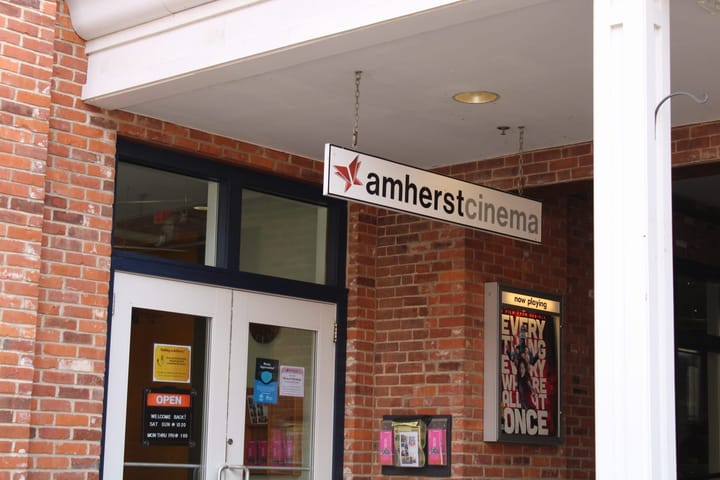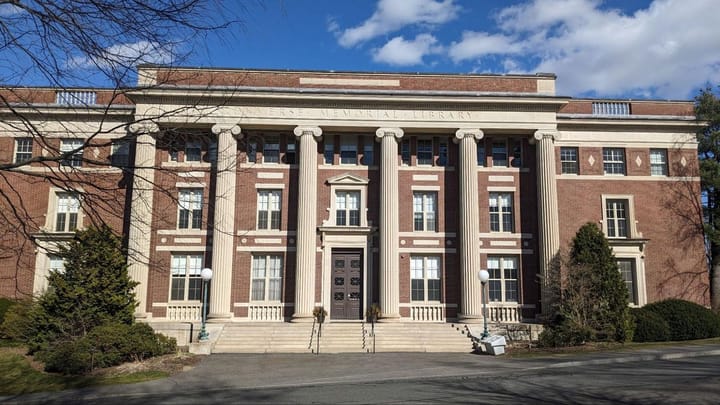Takaki lectures on multicultualism in America
Urging audience members to reflect upon the lecture’s implications, Sharma introduced Takaki, who was on her Ph.D. committee at the University of California-Berkeley. “This lecture will also make evident the necessity of ethnic studies and Asian American studies in campuses across the U.S. and of course the Valley here,” she said.
Takaki opened by noting his origins in ethnically diverse Palolo Valley on the island of Oahu, Hawaii. Confessing that he was not an academically inclined teenager, Takaki said he used to be a serious surfer with the nickname “Ten Toes Takaki.”
Explaining how a surfer became a scholar, Takaki said his high school teacher, the first Asian American non-MD Ph.D. he had met on the island, influenced him. Dr. Shunji Nishi was also essential to Takaki’s acceptance to the College of Wooster in Ohio. “Dr. Nishi changed my life,” said Takaki.
During college, Takaki encountered a homogeneous student body who asked him questions such as when he had immigrated to America. “My grandfather came here in 1886 before many European immigrants, but my fellow students could not and did not see me as a fellow American,” said Takaki.
Takaki came to realize that what he called “the master narrative of American history” caused this lack of understanding in his peers. “We’re all familiar with this master narrative,” he said. “It’s a powerful, pervasive, but mistaken story that this country was settled by European immigrants, and that Americans are white or European in ancestry.”
Graduating from Wooster in 1961, Takaki entered the Ph.D. program in American History at UC-Berkeley. Takaki recalled that his experiences as a Berkeley student in the 1960s during the Civil Rights movement inspired him to write his dissertation about slavery. His dissertation led him to apply successfully for a position teaching UCLA’s first black history course.
Takaki said that reflecting on the diverse backgrounds of his students led him to develop a new course entitled “Racial Attitudes in America: A Comparative Historical Perspective.” “I had begun to develop a new comparative approach to the study of diversity, and the key term here is comparative,” he said. From this approach, Takaki went on to write numerous books.
His first book, “Iron Cages: Race and Culture in 19th Century America,” studied race comparatively in relationship to different racial groups. Takaki’s uncle then influenced him to write “Pau Hana, Plantation Life and Labor in Hawaii,” a book examining life on Hawaii’s sugar plantations.
Takaki challenged historian Oscar Handlin with his next book “Strangers from a Different Shore.” Handlin wrote a book entitled “The Uprooted: The Epic Story of the Great Migrations That Made the American People” which focused exclusively on European immigrants. “In ‘Strangers,’ I highlighted the fact that there were also immigrations East to America … that also helped to make the American people,” he said.
Takaki then wrote “A Different Mirror: A History of Multicultural America.” The book included studies of numerous ethnic groups from Mexican Americans to Jewish Americans. “I believe that a comparative approach offers an epistemology that can lead to an understanding, a more accurate history, a more inclusive history of we the people of the United States of America,” he explained.
Takaki addressed the audience. “At this point you’re probably asking, ‘Professor Takaki, we like the idea of your comparative approach, but what does this approach look like concretely?'” he said. Takaki explained with what he called a “lecture-within-a-lecture,” approaching the study of Chinese and Irish immigrant groups during the 19th century. He demonstrated the strong relationships among different ethnic groups in the making of America’s history.
The end of Takaki’s lecture was greeted with a standing ovation from the audience and a question-and-answer session. One audience member asked Takaki about the future of this country. “Diversity is America’s manifest destiny,” Takaki responded. “The demography will challenge the American master narrative.”
Adam Lewkowitz ’06 said his favorite moment of the session was when Takaki responded to a question regarding Samuel P. Huntington. Lewkowitz recalled Takaki’s response. “He said, ‘It is unfortunate that we have Samuel P. Huntington [long silence with applause] … to continue propagating these beliefs.’ I actually have no idea what he said after the pause, but for an academic powerhouse to be so aggressive in his stance against Huntington … was the highlight of the lecture.”
Many faculty members who attended the lecture had previous ties to Takaki. “[A]s a race and ethnicity scholar, Dr. Takaki’s work has been foundational to my education and my insights on how to write about race in the United States. The chance to meet and hear such an esteemed colleague was a great opportunity for me,” said Assistant Professor of American Studies and Sociology Carleen Basler.
Professor of History and American Studies Frank Couvares noted that not only members of the Five College community but also members of the community such as grade school teachers attended the lecture. “I think all who attended … encountered a strong mind and a gentle spirit,” he said. “That combination of gentleness and strength has, over the decades, helped to put the legacy of Asians, Latinos, African Americans and Native Americans at the center of American history and American Studies.”
Janicelynn Asamoto ’06 wished that Takaki had further addressed the need for ethnic studies. “I had hoped that Dr. Takaki would speak more to the ramifications of his work and the need for ethnic studies departments in colleges and universities across the nation,” she said.
Many stressed the importance of dialogue concerning the issue of Asian Pacific American studies at the College, which was one of the purposes of the event. “I went to the lecture, because I thought that it would address issues of multiculturalism that this college needs to confront … namely an Asian Pacific American studies major or at least certificate program,” said Alex Clark ’08.
Visiting Professor of English and Black Studies Suzanne Schneider thought that the speech was timely. “I think that Dr. Takaki’s lecture came at a particularly important time in terms of the current concerns on Amherst’s campus,” she said.
Visiting Writer May-lee Chai addressed the same issue. “[A]t Amherst, we’re still struggling to create a coherent APA studies program,” she said. “But as Professor Takaki showed in his lecture, if you leave out the history of Asians in America, the history of America doesn’t make sense.”





Comments ()